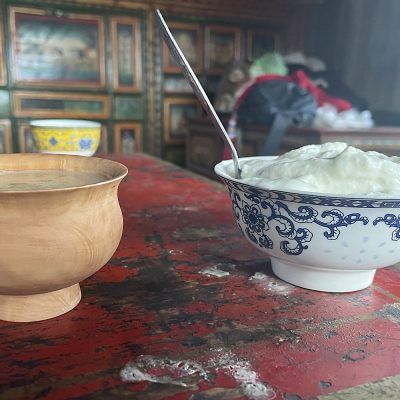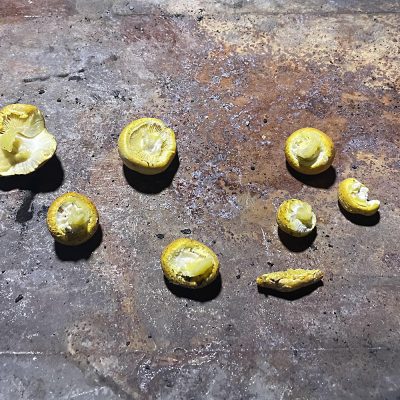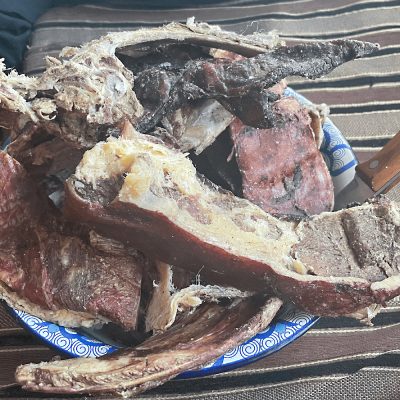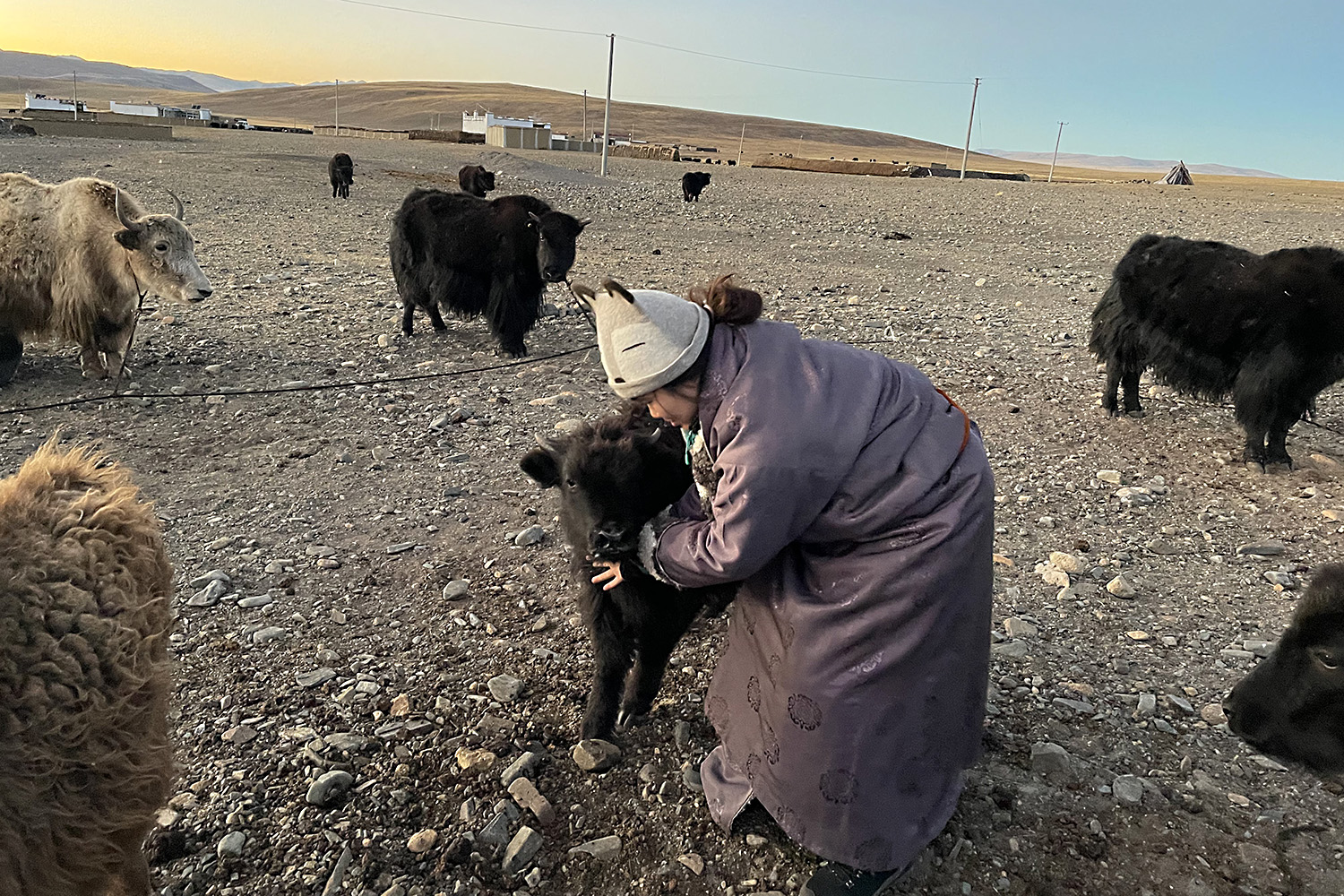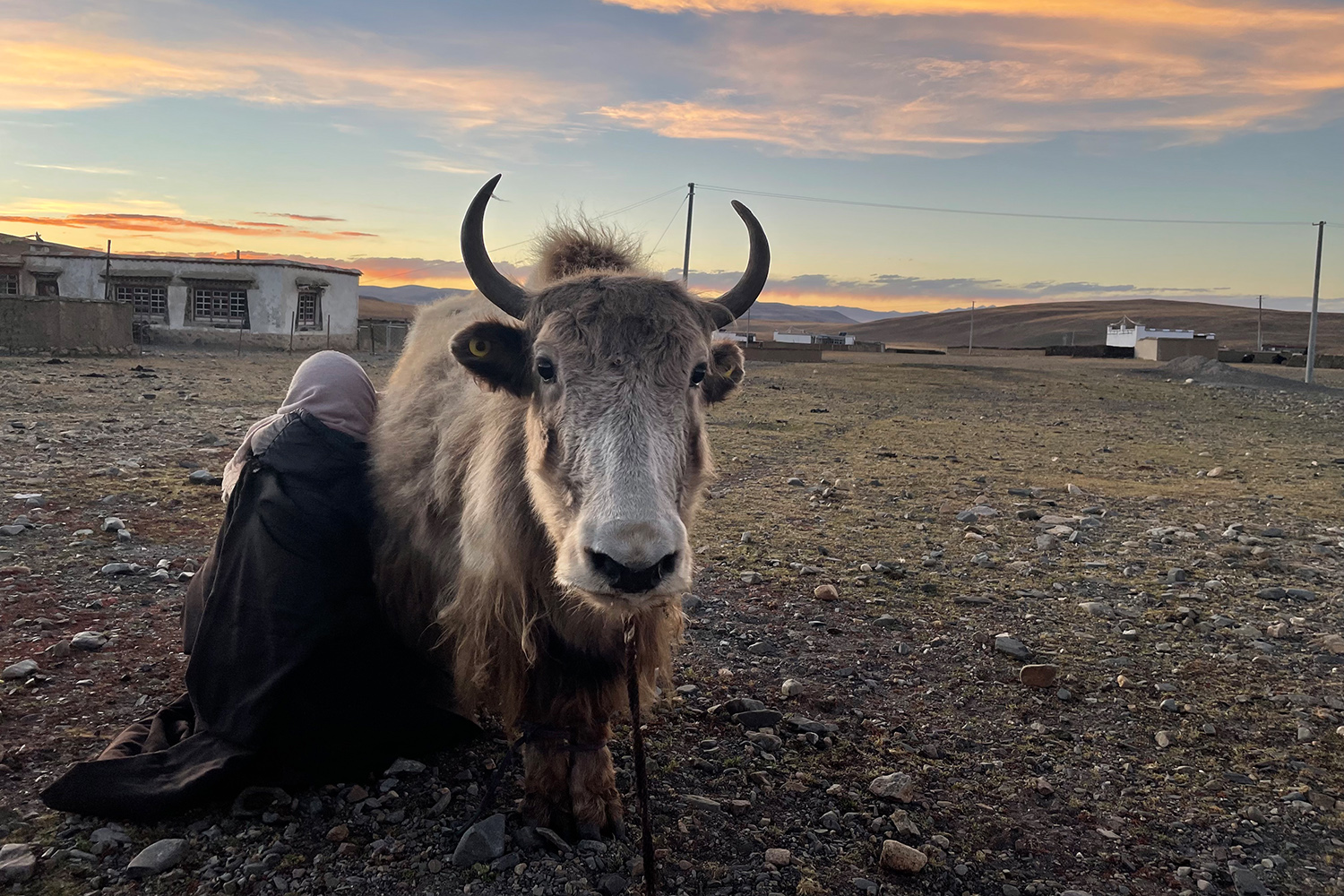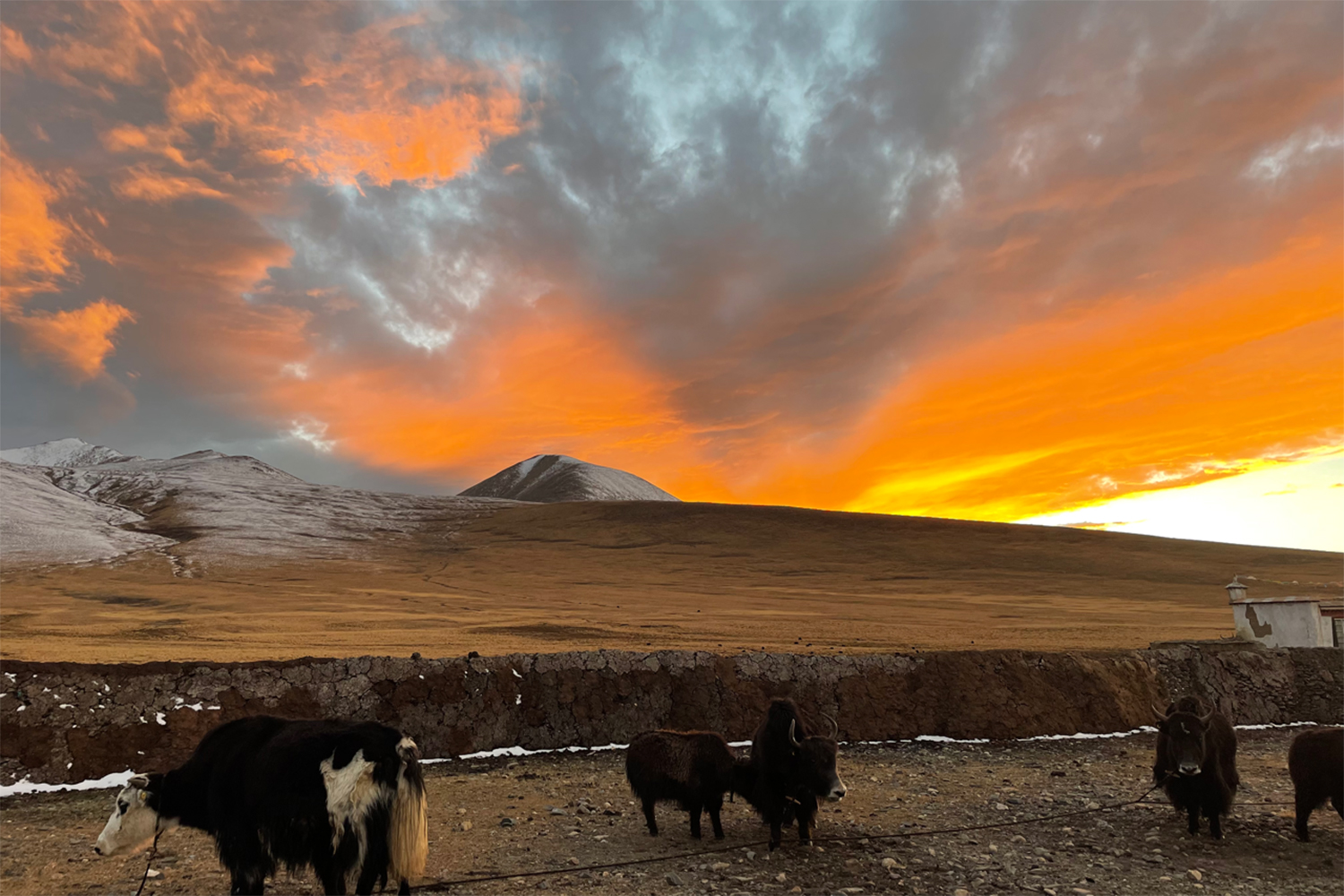Butter tea, ba and dung walls Living with Yak Herders in Tibet, Part 2: Daily life
Milking, herding yaks, dealing with dung, getting up at three in the morning: After a short stay in Lhasa, PhD student Siran Liang from the Institute for Geosystems and Bioindication (IGeo) has now arrived at “her” herder family at Changtang grassland. In the second part of her logbook, the scientist describes the everyday life she shares with the inhabitants of the village at an altitude of 4,800 metres on the Tibetan Plateau.
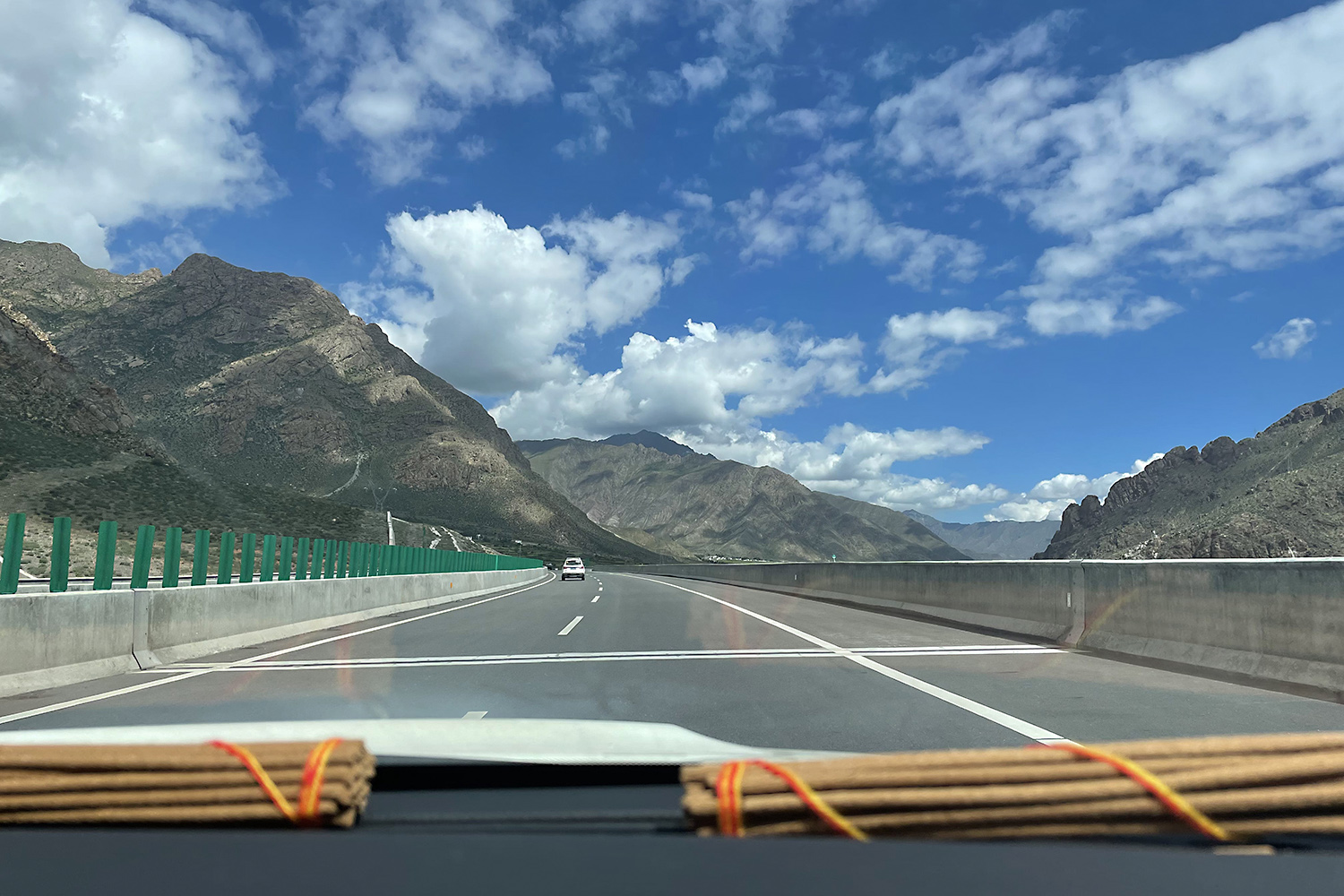
The highest highway in the world, the newly built Lhasa-Nagqu highway which opened in August 2021. At the bottom of the windshield are Tibetan incense. Picture credits: Siran Liang/TU Braunschweig
A good friend, a PhD student majored in Tibetology from Tibet University, comes from a pastoralist family in Changtang grassland. He was kind enough to let me stay with his parents who are still living on the grassland. Thanks to him, I gained the initial entry to a herders’ community on the grassland. As we drove out of Lhasa, we left city buildings behind and were suddenly surrounded by vast mountain slopes. Seeing the mountains, I became excited about my journey ahead.
When we first arrived, people came out from their houses to greet us. I greeted them by saying: “Tashi Delek” meaning I wish you good luck, which is a standard way of greetings across Tibetan textbooks. My good friend and his relatives, however, held their heads and made a gentle touch with the side of their foreheads. I liked this way of greeting immediately.
Initially, they let me sleep in their shrine room. I was content with this sleeping arrangement at the beginning because I was happy that I could at least have some privacy during the evenings. But after several freezing nights, my longing for warmth beat the need for privacy. Since then, I always slept in the living room (also dining room and kitchen) where the only heater in the house is located, together with the parents of the house. During daytime, when blankets are removed, the sitting area is sofa. In the nighttime, with blankets, sofas become beds.
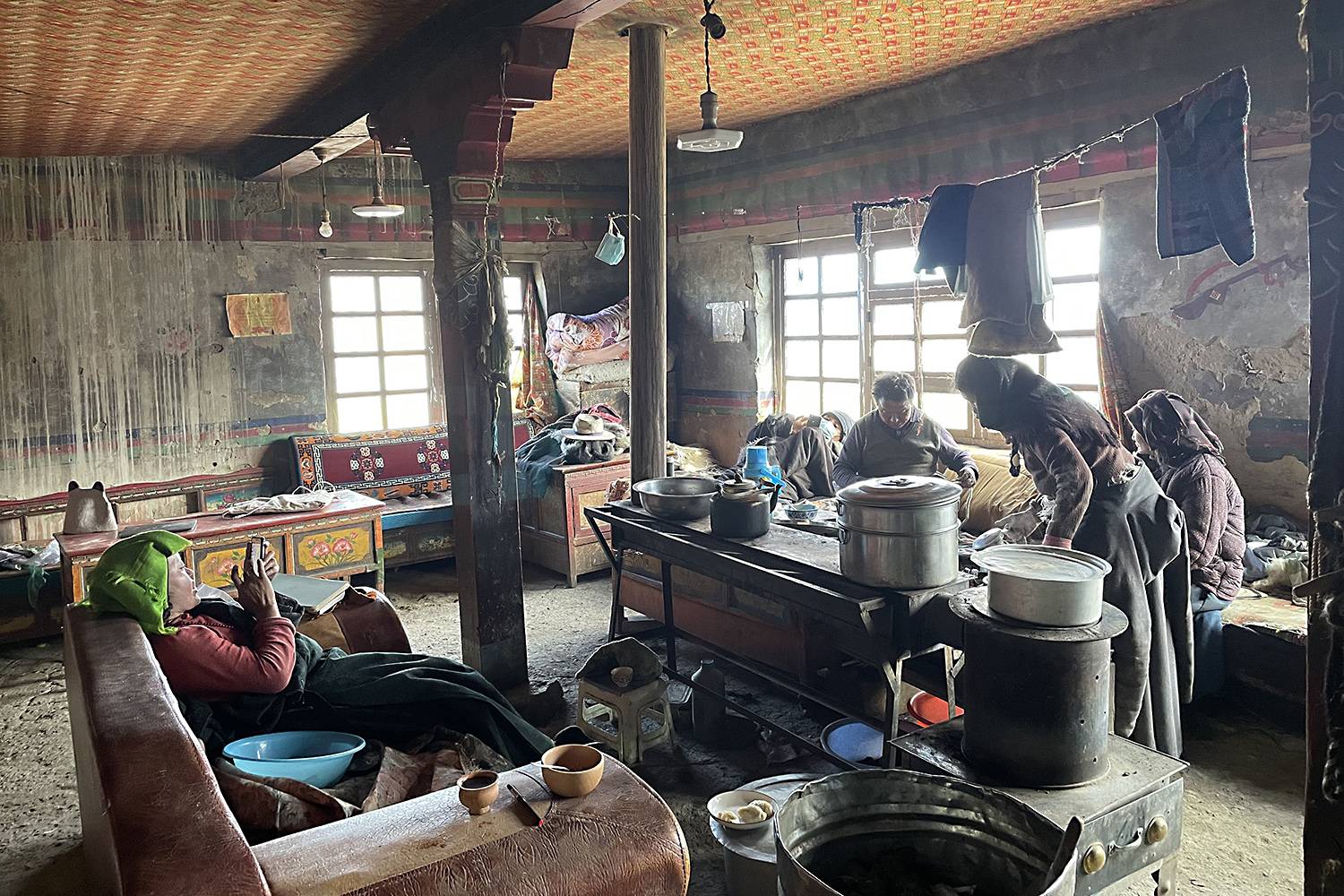
A herder family’s home: a living room/dining room/ kitchen. Behind the colorful desk at the left is where I slept. The parents’ sleeping place is at the right side, behind the stove. Picture credits: Siran Liang/TU Braunschweig
The time of eating is flexible and varies from day to day. Breakfast usually follows the morning work, such as milking and herding. Yogurt, yak butter tea and ba (roasted barley flour mixed with yak butter tea) is the most common breakfast set. I can still vividly remember, the first time I ate barley flour, which was almost ten years ago. That time, when the host gave me the barley flour, without asking my host for instruction I put them directly in my mouth. I was choked, barley flour came out from my nose, leaving my host in astonishment. Dairy, yak and yellow mushrooms are self-produced, everything else has to be bought from outside, such as vegetables, which became mundane food item only recently, wheat and barley flour, rice, sugar, salt, soya sauce etc. And when young people come home for summer holidays, some of them prefer instant noodles over the typical ba.
- My favorite breakfast: yak butter tea and home-made yogurt. Picture credits: Siran Liang/TU Braunschweig
- Yellow mushrooms with yak butter on a stove. Picture credits: Siran Liang/TU Braunschweig
- Air-dried yak meat. Picture credits: Siran Liang/TU Braunschweig
To really immerse in the daily lives of the Tibetan family I tried to accompany them all day and participate in every task, a “deep hanging out”. Sometimes, I dragged my body to get up at 3 o’clock in summer or 6 o’clock in winter to participate and observe the yak milking and dung processing activities with the women. But to be honest, usually, I got up between 7-9 o’clock because I am not a morning person. During the day I helped the mother of the house with mundane housework. I carried water from a river nearby, prepared food, washed dishes, filled the heater, served tea to the men and the guests, etc.
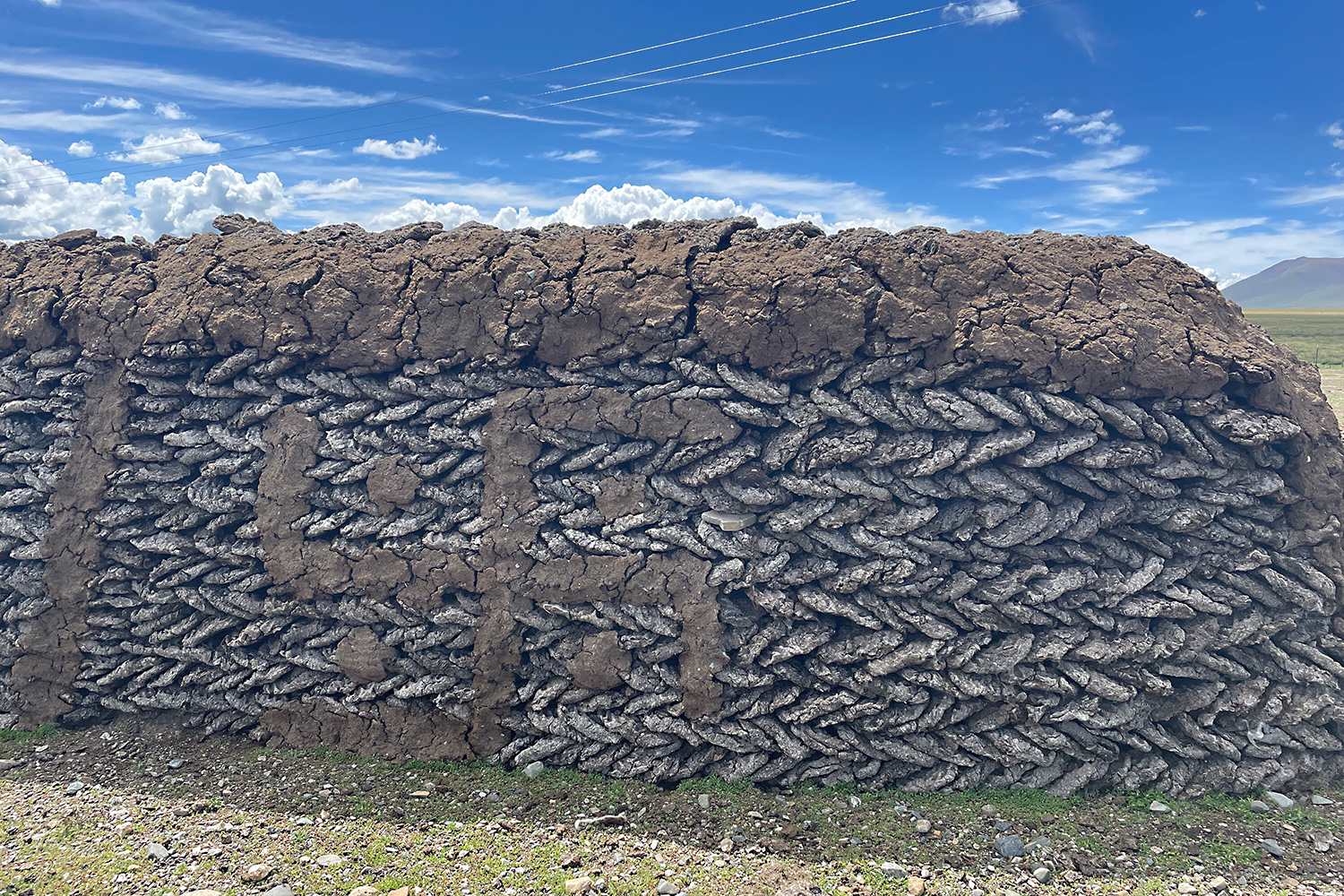
A kid showed me to a yak dung wall his mum made and said his mum makes beautiful walls. A swastika can be seen on the wall. The cross is used as a religious symbol of luck. Picture credits: Siran Liang/TU Braunschweig
One crucial task I was involved in was dealing with yak dung. Yak dung is one of the most important resources for pastoralist families, because it is used for heating. Most of yak herding communities in Tibet are located in the area way above tree line. It is speculated that yak dung was the essential element that enabled early nomads to live on this treeless land. Thus, on many days I assisted the families collecting the yak dung, dried them under the sun, we filled yak dung into the heater, and build yak dung walls to store yak dung and to protect yaks in harsh winters.
After the first several weeks of stay, I was proud to be quite helpful during the milking sessions. My main task was to handle the yak calves. Before milking, I released one yak baby so it can go to its mother and suckle milk. Then I took the baby yak away, so the human could start to milk the yak. After human got their share of milk, I release the baby yak again so it can have the rest of the milk. When all the milking is finished, I took all baby yaks away again. With my assistance, the mother could concentrate on milking yaks.


